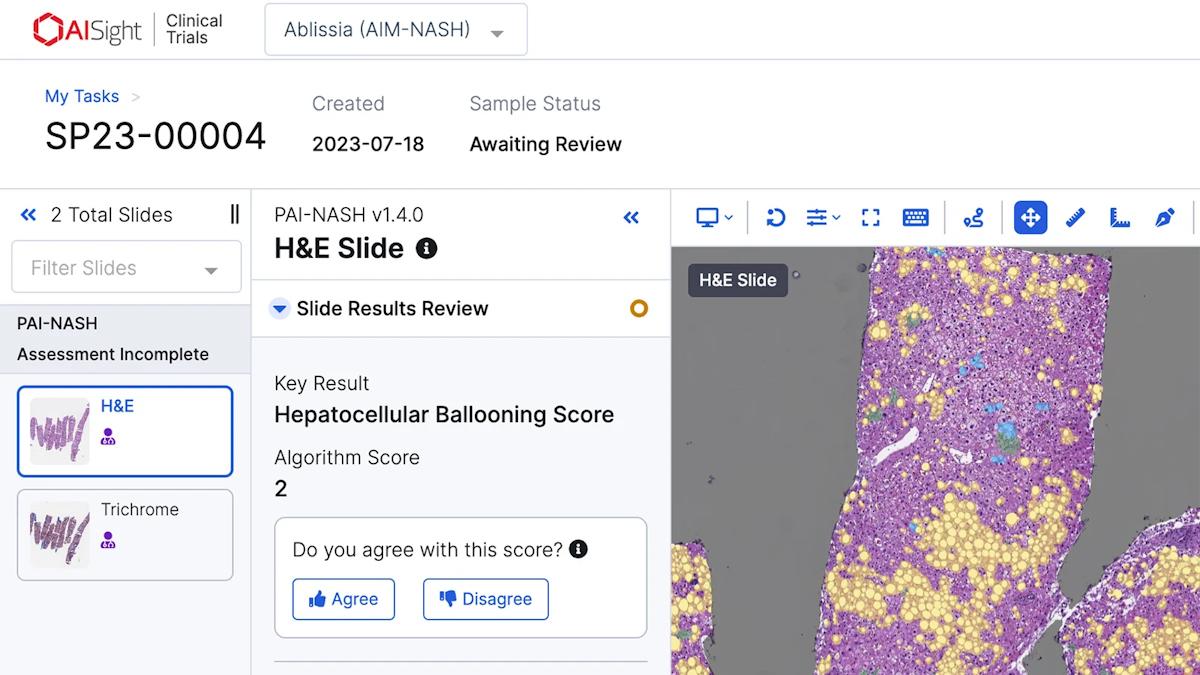The growing challenge of conducting clinical trials for metabolic associated steatohepatitis (MASH)

Liver disease is on the rise around the world, posing a significant health concern. Fortunately, more and more pharmaceutical companies and academics are striving to create increasingly effective treatments to tackle common liver diseases, including metabolic associated steatohepatitis (MASH). But these researchers are facing a mounting pile of challenges when it comes to conducting their clinical trials, partly because of increasingly stretched resources at study sites.
Last year, liver diseases accounted for over 2 million deaths – almost one in 20 – globally1. A steep rise from 2.4% of deaths in 20192. The term ‘liver disease’ covers a range of conditions, including viral hepatitis, alcoholic liver disease, and metabolic dysfunction-associated steatotic liver disease (MASLD), and its more severe form, MASH (formally known as non-alcoholic fatty liver disease (NAFLD) and non-alcoholic steatohepatitis (NASH), respectively).
These diseases are becoming increasingly common due to lifestyle changes, and they pose serious health risks. People with comorbidities, including type 2 diabetes and obesity, and people from more deprived backgrounds are more susceptible to developing these conditions.
In fact, MASLD is the most common chronic liver disease in the world. Worldwide, the estimated prevalence of MASLD is 38% in adults and around 13% for children3 – that is roughly 2.5 billion people. Around 20% or 500 million people with MASLD will go on to develop MASH in their lifetimes,4 which is already estimated to impact about 115 million adults worldwide. This condition results from the accumulation of fat in the liver, leading to inflammation and fibrosis. At its most advanced stage, MASH causes significant disability, reducing sufferers’ quality of life, and can progress to cirrhosis, liver cancer, and death.
Challenges in conducting MASH clinical trials
Shockingly, there is currently just one approved pharmacological treatment for the condition, Madrigal’s Rezdiffra. So, it is crucial to conduct thorough research and clinical trials to better understand the disease mechanisms, develop and test even more effective treatments, and ultimately improve patient outcomes around the world.
Thankfully, research in MASH is booming. Currently, there are 417 MASH-related clinical trials5 that are either active or in the recruitment stage, led by both universities and pharmaceutical companies, including industry giants like Pfizer and Eli Lilly.
While the investment and interest in MASH is extremely promising, its surge in activity has made conducting clinical trials for it increasingly difficult. One major challenge is the growing competition for recruiting participants who meet the very specific criteria required for these trials. As more research is conducted in this area, the pool of eligible participants becomes more limited, making recruitment even harder. Without increasing awareness of MASH and the markers to aid in diagnosis, recruitment will remain a significant challenge.
In a similar vein, many clinical trial sites lack experience and expertise in recruiting for and managing trials focused on MASH. That means sites that are well-versed in recruiting for and running MASH trials are more sought after, and therefore stretched thin. But turning to inexperienced sites can lead to inefficiencies and delays, further complicating the clinical trial process.
This lack of experience is compounded by the complex nature of MASH, which stems from its intricate pathophysiology and the absence of definitive diagnostic and therapeutic tools. The development of MASH, for example, involves a cascade of metabolic disfunctions, inflammatory responses, and genetic predispositions. This makes it much harder to pinpoint how, when, and where the condition starts to develop in the body.
Moving towards innovation for early diagnosis
The silent nature of MASH, which commonly progresses asymptomatically until it causes significant liver damage, means that many cases are not diagnosed until a late stage. Early detection is also difficult due to ineffective diagnostic pathways for the condition.
Diagnosis traditionally relies on liver biopsy for histological assessment, despite its invasiveness and potential for sampling variability. This inherent variation in interpreting biopsy samples underscores the need for more standardised diagnostic tools.
The lack of precise biomarkers for MASH remains a significant barrier to effective management. Current assessments, such as the NAFLD Fibrosis Score, for example, are not sensitive enough to detect early-stage MASH. Novel biomarkers that employ imaging, such as LiverMultiScan, show promise, but their uptake and accessibility needs to be wider before their potential utility is reached.
That means that even the most experienced study sites can face serious challenges when it comes to recruitment, which requires precise identification and monitoring of disease stages and patient demographics. Moreover, the difficulties with accurately diagnosing MASH can lead to high exclusion and screen failure rates, increasing the cost of trials while also causing frustration for participants, especially those excluded at later stages, and researchers.
One solution to these challenges could be to uncover the hidden signs of MASH in existing blood test results, which could revolutionise its early detection and treatment. In the UK, researchers have made a promising step by building a system that enables researchers to identify everyone in a particular region likely to meet their criteria, based on their historical test results. This approach has the potential to enhance efficiency by reducing screen failure rates and widening the pool of study sites, which could also promote more inclusive and representative clinical trials.
New technological advancements, like those mentioned above, are essential for accelerating the development of effective treatments for MASH, while reducing costs for researchers and, most critically of all, improving patient care and outcomes worldwide.
Reference
- https://www.journal-of-hepatology.eu/article/S0168-8278(23)00194-0/fulltext
- https://www.nature.com/articles/s41575-023-00759-2
- https://journals.lww.com/hep/fulltext/2024/02000/a_global_action_agenda_for_turning_the_tide_on.21.aspx
- https://liverfoundation.org/liver-diseases/fatty-liver-disease/nonalcoholic-steatohepatitis-nash/nash-definition-prevalence/
- https://clinicaltrials.gov/search?cond=NASH%20-%20Nonalcoholic%20Steatohepatitis&aggFilters=status:not%20rec%20act












